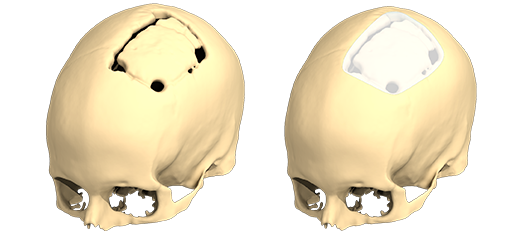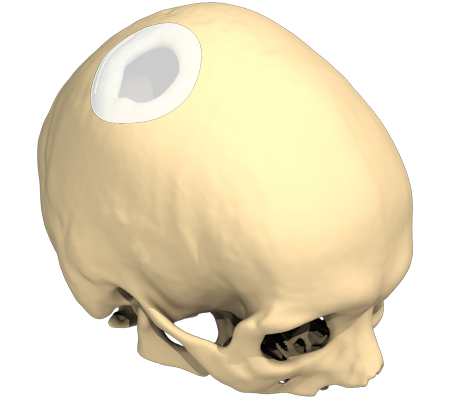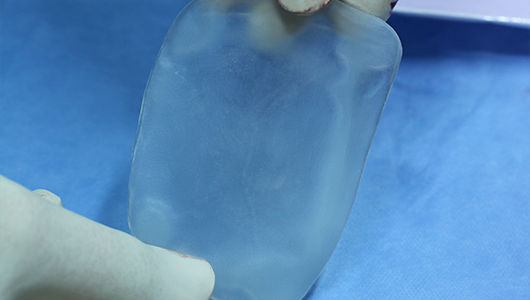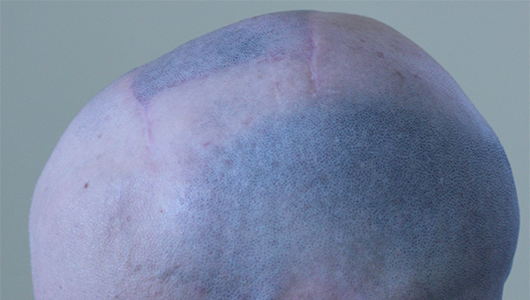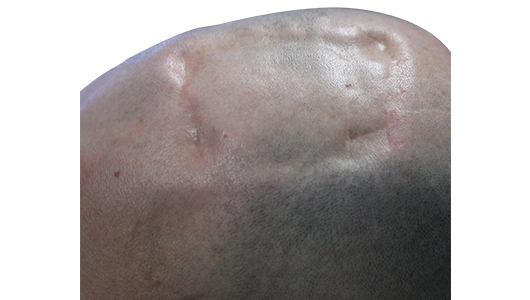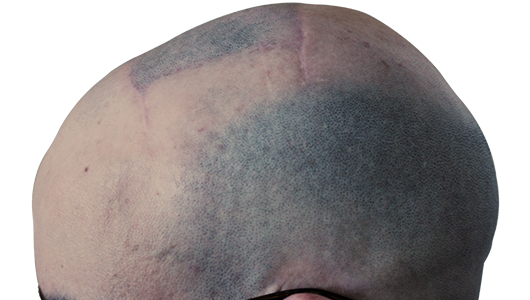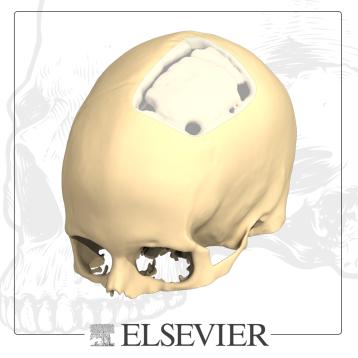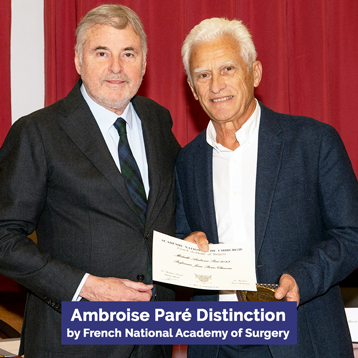Cranial deformation
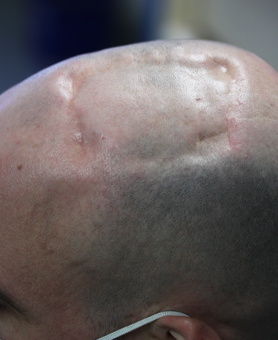
Cranial deformation may be of congenital origin or the result of an accident. It also often results from neurosurgical procedures requiring opening of the cranial vault in order to access the cortex, particularly for tumours.
It is not always possible to replace the cranial flap (infection), leaving the cerebral cortex exposed under the scalp. Even if it is replaced, a visible deformation may remain (sunken flap, flap atrophy, displaced flap - trepanning holes), which is difficult for the patient to accept.
3D Custom-made implant technique
Using a cephalic extremity CT scan of the patient, Anatomik Modeling creates a virtual copy of the skull, including the various anatomical frameworks of interest: scalp, cranial vault, cerebral cortex.
The implant is then designed virtually by computer in order to precisely correct the deformation or bone substance loss. Using a prototype, perfect copy of the implant, the Sebbin laboratory undertakes the final manufacture of the prosthesis in silicone rubber, following current ISO standards
